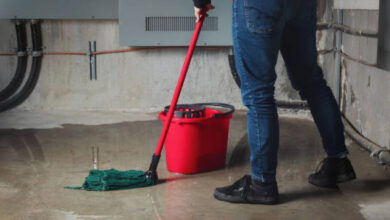Understanding the Baba30 Engine: Powering a Classic Bluewater Cruiser

The Baba 30 engine has long been a key feature of the iconic Baba 30 sailboat, known for its rugged design and capability in bluewater sailing. Designed by the legendary Bob Perry and produced between 1978 and 1985, the Baba 30 remains a cherished vessel among sailors for its sturdy build, seaworthiness, and timeless design. This article explores the heart of this yacht—the Baba 30 engine, focusing on its various configurations, performance characteristics, maintenance considerations, and why it plays such a vital role in the longevity of this classic sailboat.
Digi Blogs aims to deliver insightful content to boat enthusiasts and those considering owning or maintaining a Baba 30 yacht. Read on to discover everything you need to know about the Baba 30 engine.
What is the Baba 30 Engine?
The Baba 30 engine is primarily a diesel engine, most commonly the Yanmar 3GM, although some models feature Volvo or Universal engines. These engines provide the auxiliary power necessary for maneuvering in harbors, navigating calm waters, and offering peace of mind when the wind dies down. For a 30-foot boat built for long-distance, offshore cruising, having a reliable engine is essential, and the Baba 30 engine delivers on that front.
While the original engine configurations have stood the test of time, many Baba 30 owners have opted for engine upgrades as part of their boat’s overall maintenance and restoration process.
Key Specifications of the Baba 30 Engine
The Baba 30 engine, particularly the Yanmar 3GM, is known for its durability and efficiency. Here are some of its key specifications:
- Model: Yanmar 3GM (most common engine)
- Fuel Type: Diesel
- Horsepower: Approximately 22-27 HP
- Number of Cylinders: 3
- Cooling System: Freshwater-cooled, preventing corrosion and extending engine life
- Transmission: Gear-driven
These specifications allow the Baba 30 engine to provide enough power to propel the sailboat through various conditions, ensuring it performs well in both calm and challenging environments. With a full keel and a displacement of 13,500 pounds, the boat demands a reliable engine to navigate harbors or assist when winds are too light for sailing.
Performance of the Baba 30 Engine
The Baba 30 engine is designed for efficiency, balancing fuel consumption with the need for power. In calm seas, the engine can push the boat at a steady speed, often between 5 and 6 knots, making it a reliable auxiliary power source. This is especially important for long-distance sailors who rely on the engine when there is no wind or when precise control is needed in tight spots like marinas or narrow channels.
In light wind conditions, the Baba 30 engine comes into play. While the boat’s full keel and cutter rig make it an excellent cruiser in moderate to heavy winds, it struggles in light air. The engine is thus an essential feature for maintaining speed and control, especially during coastal cruising or when wind conditions are unpredictable.
As mentioned earlier, the Baba 30 engine typically comes in diesel models like the Yanmar 3GM, offering a perfect balance of power and fuel economy. Diesel engines are preferred for their reliability, especially in offshore sailing where maintenance opportunities are limited.
Maintenance and Common Issues with the Baba 30 Engine
Like any marine diesel engine, the Baba 30 engine requires regular maintenance to ensure it operates smoothly. Here are some common areas that need attention:
- Fuel System: The fuel tank on older Baba 30s is often made from mild steel and placed in the bilge, making it susceptible to rust. This can lead to fuel contamination and engine issues if not addressed. Many owners replace the original tank with stainless steel or plastic tanks for better longevity.
- Cooling System: Diesel engines like the Yanmar 3GM rely on freshwater cooling systems to prevent corrosion in saltwater environments. Regular inspection and maintenance of the coolant, impeller, and heat exchanger are necessary to avoid overheating.
- Engine Mounts and Vibration: Over time, engine mounts can wear out, leading to increased vibration. Replacing these mounts is crucial for the engine’s smooth operation.
- Exhaust System: Checking for leaks or blockages in the exhaust system is essential to prevent engine damage or dangerous fume buildup inside the cabin.
Maintaining the Baba 30 engine requires consistent effort, but the rewards are a reliable engine that will support the boat through many years of cruising. At Digi Blogs, we understand the importance of preventative maintenance and encourage boat owners to stay on top of regular inspections.
Engine Upgrades and Modifications
Over the years, many Baba 30 owners have upgraded their original engines, often replacing the aging Yanmar 3GM with more modern and efficient engines. While the Yanmar remains a popular choice, newer models offer better fuel efficiency, lower emissions, and quieter operation. Popular upgrades include:
- Yanmar 3YM: A modern replacement for the older 3GM model, offering better efficiency and a quieter ride.
- Volvo Penta D1-30: Another popular choice for replacing older engines, known for its reliability and ease of maintenance.
Upgrading the Baba 30 engine is often seen as a worthwhile investment, especially for owners who plan to take their boat on extended offshore voyages. With proper care, a new engine can last for decades, ensuring the Baba 30 remains seaworthy and reliable.
Why the Baba 30 Engine Matters
The Baba 30 engine is more than just a power source for this classic sailboat—it is a symbol of reliability and self-sufficiency. For sailors who cherish long-distance cruising and offshore adventures, the engine provides the peace of mind that comes from knowing you have the power to navigate when wind conditions are less than ideal.
As Digi Blogs highlights, the Baba 30 sailboat is a vessel that continues to impress sailors with its durability and performance. Whether you are navigating through calm coastal waters or facing the challenges of bluewater cruising, having a well-maintained Baba 30 engine is essential to ensuring a safe and enjoyable voyage.
Conclusion: The Legacy of the Baba 30 Engine
In conclusion, the Baba 30 engine is a vital component of the iconic Baba 30 sailboat. With a reputation for durability, efficiency, and reliability, the Yanmar 3GM diesel engine, along with other engine options, provides the necessary power to complement the boat’s excellent sailing capabilities. Regular maintenance and, when needed, engine upgrades can extend the life of this classic cruiser, ensuring that it continues to navigate the world’s oceans for many years to come.
Digi Blogs is dedicated to providing insightful articles for boat enthusiasts, and the Baba 30 engine is just one example of how classic design and modern technology come together to create timeless sailing experiences.




